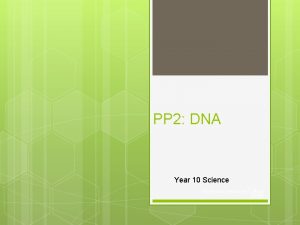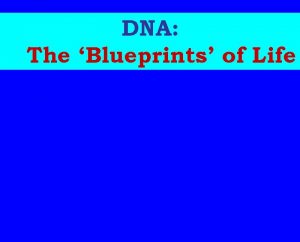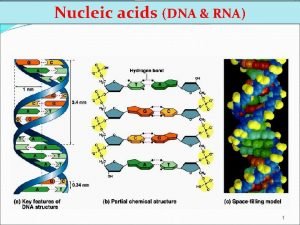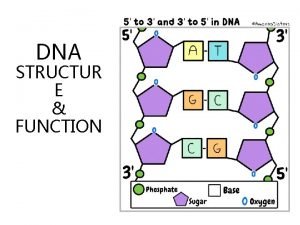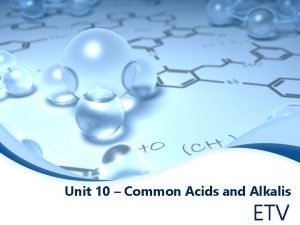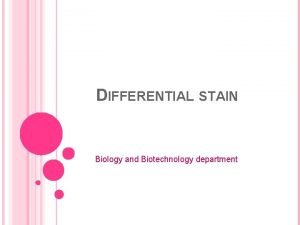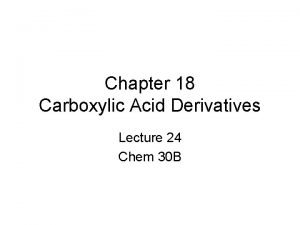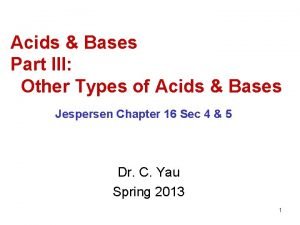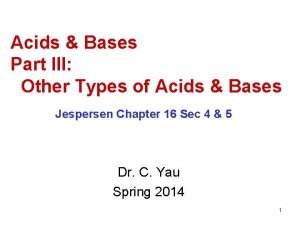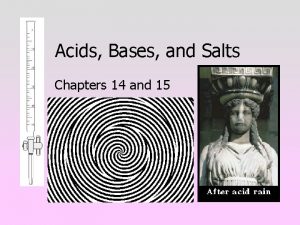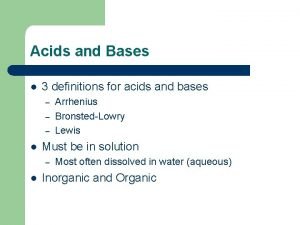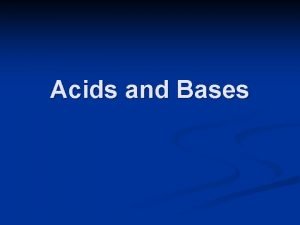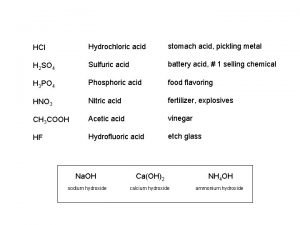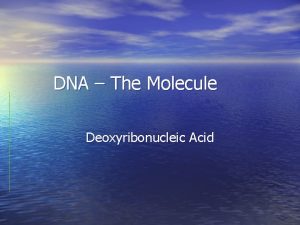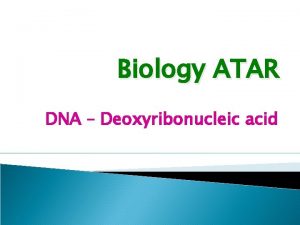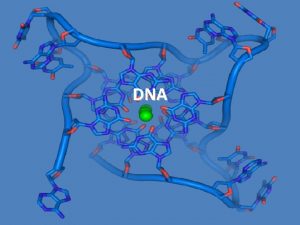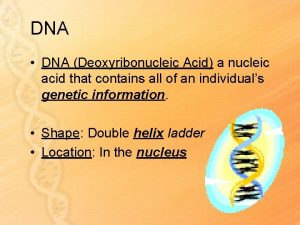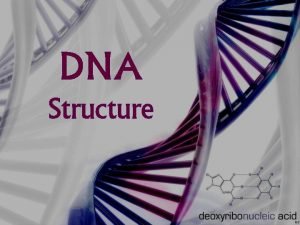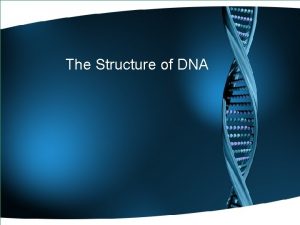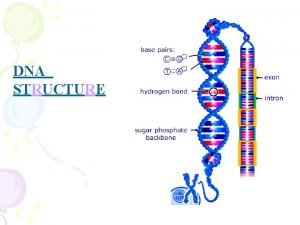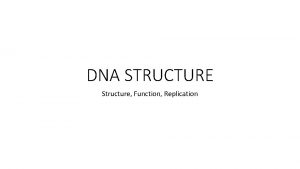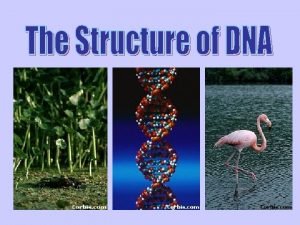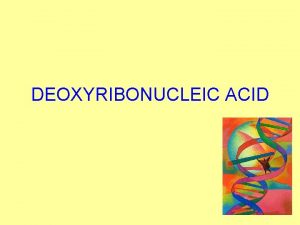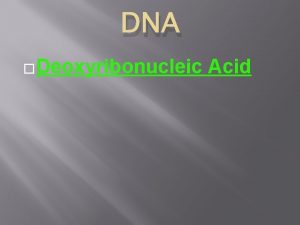DNA Structure DNA Structure DNA Deoxyribonucleic Acid DNA

DNA Structure

DNA Structure • DNA – Deoxyribonucleic Acid • DNA - the thread of life • DNA – the genetic carrier

Evidence for DNA: Bacterial Transformation • In 1928, F. Griffith was attempting to develop a vaccine against Streptoccocus pneumoniae he noticed 2 strains: one had a rough surface appearance, but those of the other strain appeared smooth. He designated the 2 strains R and S and used them in 4 experiments:


In the fourth experiment: • Live R received from dead (heat-killed) S bacteria a piece of DNA that caused the formation of the capsule in R bacteria. New R bacteria gained the gene of the capsule and became virulent. • Transformation: transfer a gene from one bacterium to another

Confirmation of DNA function • View the animation ‘Hershey and Chase Experiment” in my Website. • Bacteriophages are viruses that infect bacteria. • The bacteriophage is made of a protein coat and a DNA core.

Confirmation of DNA function • Bacteriophages inject their DNA into the bacterial cell, while the protein portion remains outside of the cell. • This experiment confirms that DNA, not the protein, is the genetic carrier. View “Steps in the Replication of T 4 Phage in E. coli” – animation in my Website

DNA Structure • The basic building block of DNA is a nucleotide. • Each nucleotide is made of 3 sub-units: * Phosphate – P * Deoxyribose – R (5 -C-compoud) * One of 4 bases: A, T, C, or G (A-Adenine, TThymine, C-Cytosine, G-Guanine) * How many different nucleotides are there?

• A DNA molecule is composed of 2 nucleotide chains (strands) oriented in opposite direction (antiparallel), and are twisted together (double helix) • View “DNA Structure” – animation in my Website.

The first strand (blue) starts with five prime (5’) end, ends with three prime (3’)end. The second strand (red) is oriented in opposite direction Complementary base pairing: A in one strand pairs with T in the second strand (A=T pairs), and C pairs with G (C=G pairs) Example: if a sequence of bases in a strand of a DNA molecule is: 5’ A T T C G A G C T 3’ What is the sequence of bases in the second strand? 3’ T A A G C T C G A 5’

Because of this complementary base pairing: A=T, and C=G • 1. The total amount of A in a DNA molecule is equal to the total amount of T • 2. The total amount of C in a DNA molecule is equal to the total amount of G • A + T + C + G =100% of a DNA molecule • Example: If A makes up 23% of a DNA molecule. C makes up what proportion? • 27%

• In the complementary base pairing hydrogen bonds are used



DNA Replication • View “DNA Replication” and “DNA Replication Fork” animations in my Website.
- Slides: 15

